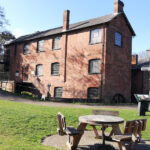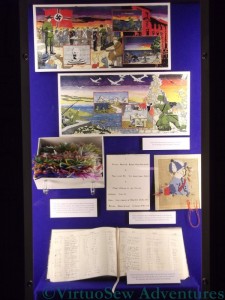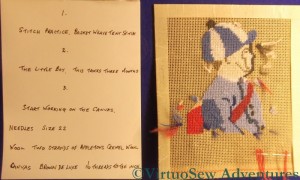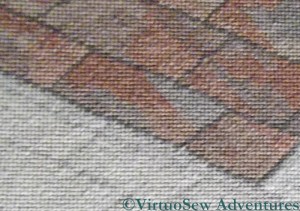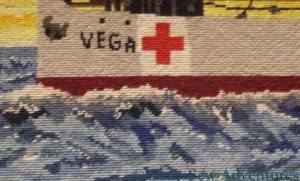Tag: Worth A Visit
Forge Mill Needle Museum
Did you know that Redditch was once the centre of needlemaking, pretty much world wide? Did you know that there was a museum (Forge Mill Needle Museum) devoted to needle making and needle use?
No?
Neither did I. But I had a splendid time when I found it!
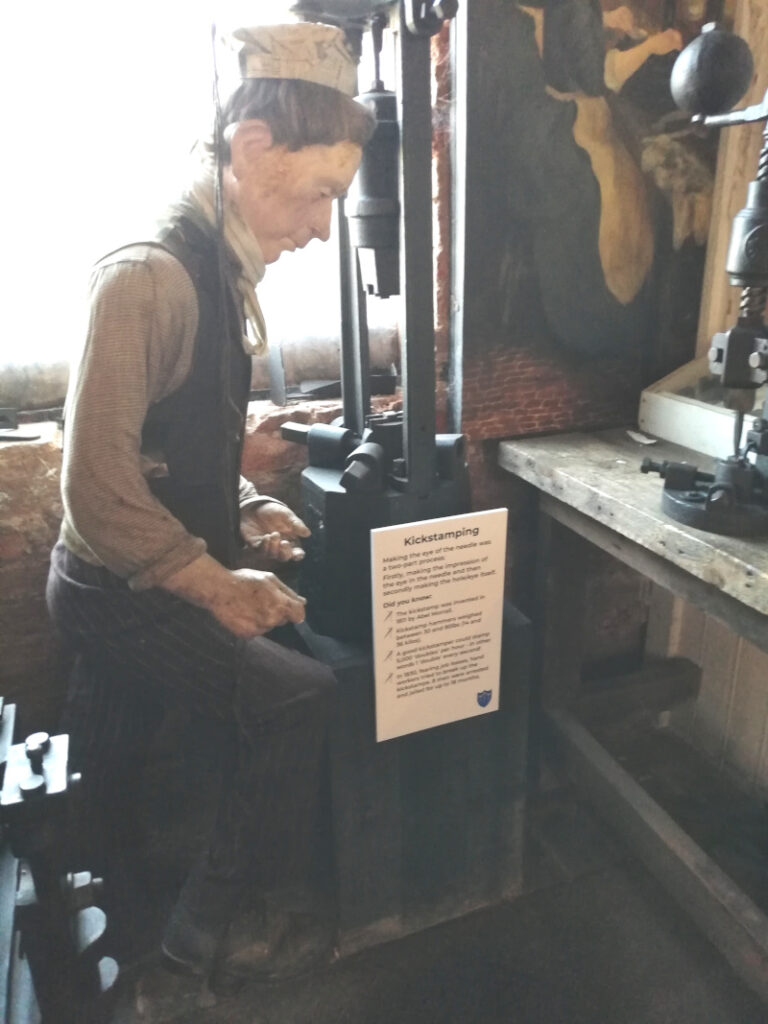
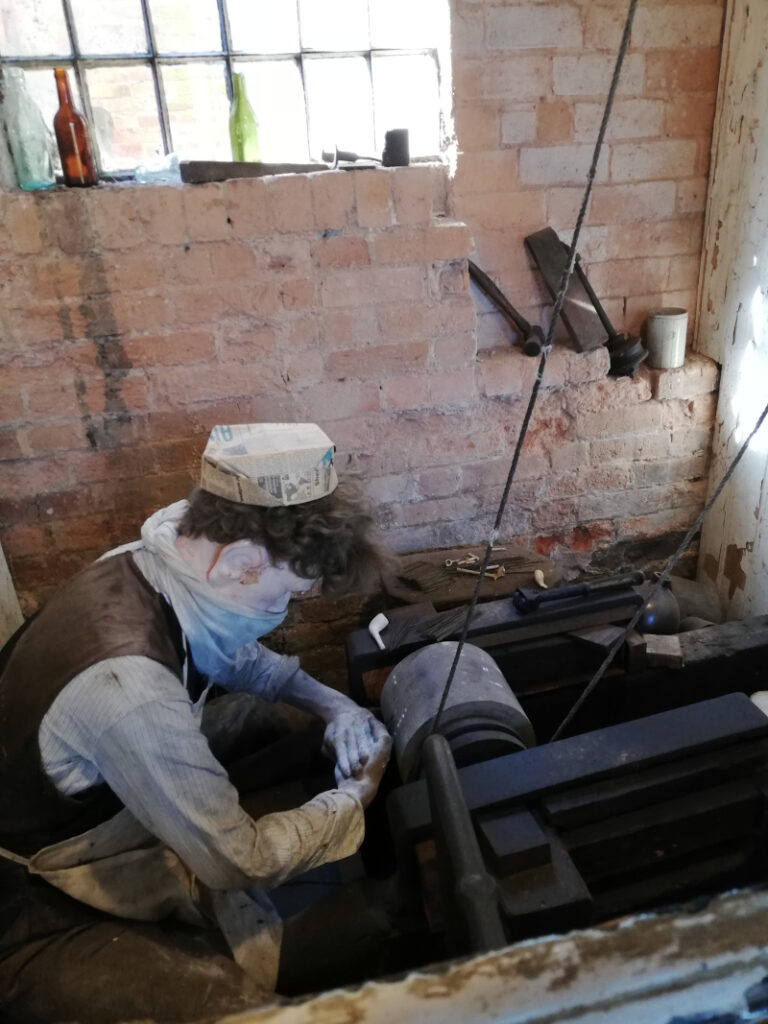
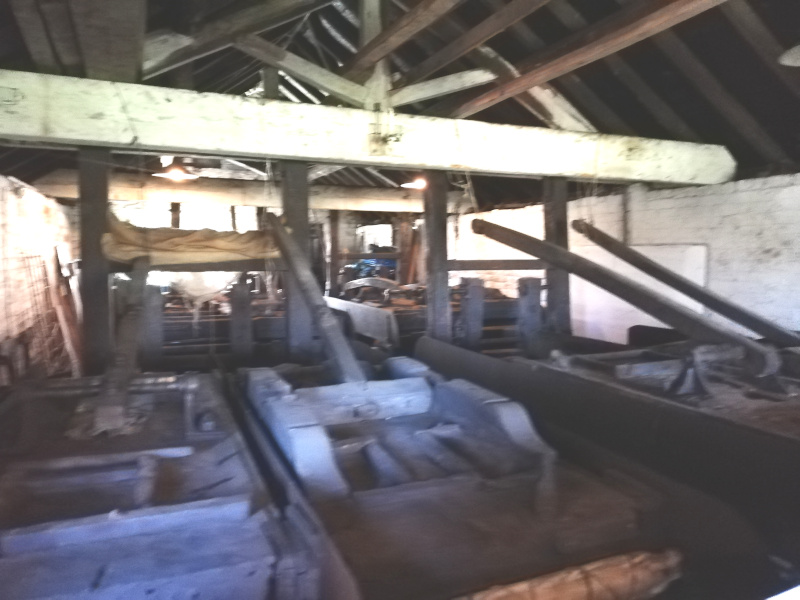
It’s not a big museum, but it includes information and displays about needle making in the eighteenth and nineteenth centuries, and there are volunteer guides who provide tours. I was lucky to be there on a day there was a tour – until that morning I hadn’t even known the place existed. Anyone who knows anything about the development of manufacturing processes and technology won’t be especially surprised by the poor labour practices or unsafe working conditions of the period, but in an era when some industrial diseases are on the rise (silicosis,:plague of miners, pointers, and now the makers of granite and faux granite kitchen worktops), it is good to be reminded that firstly improvements have been made, and secondly that they have to be kept.
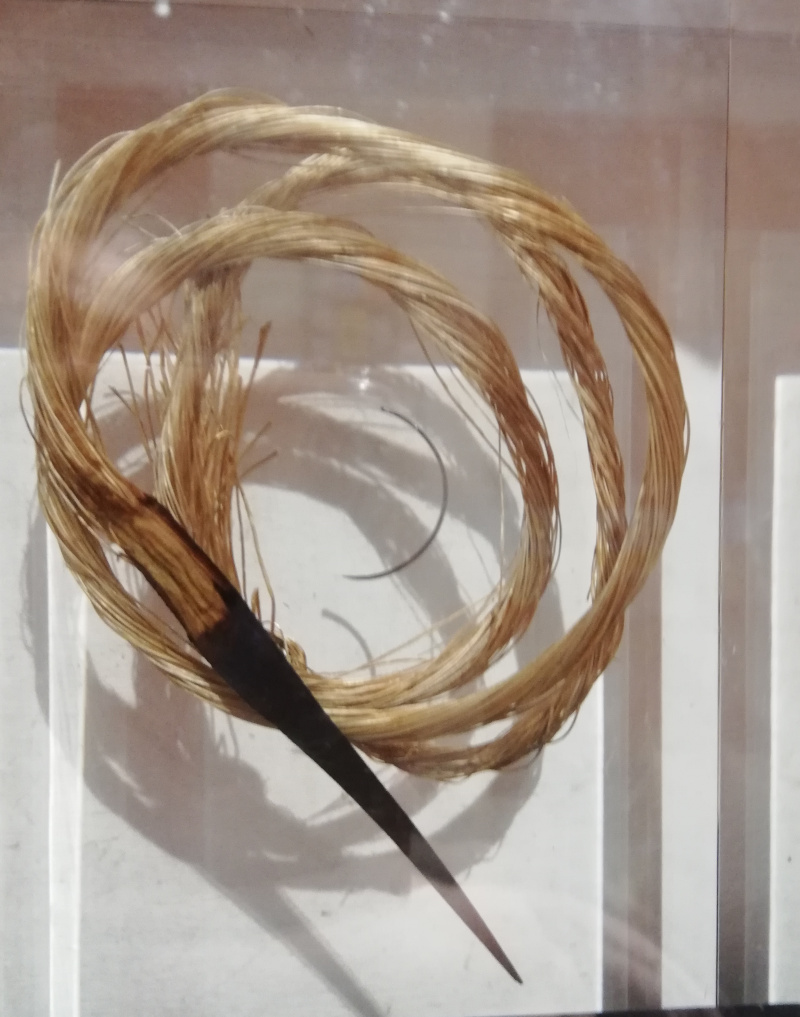
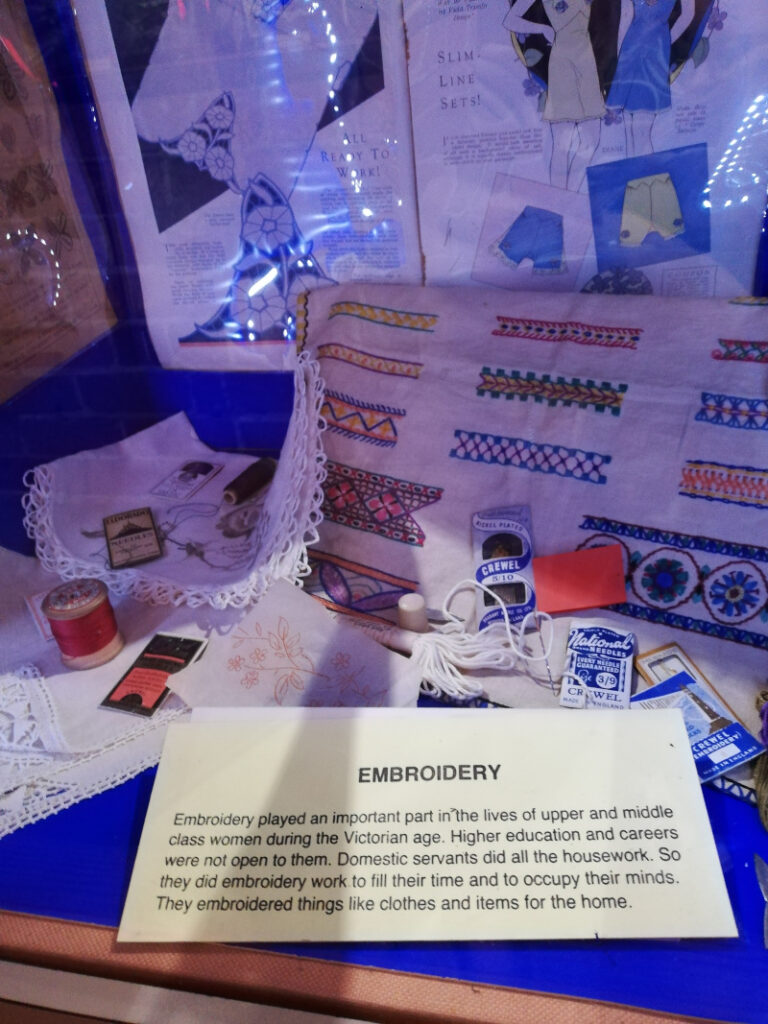
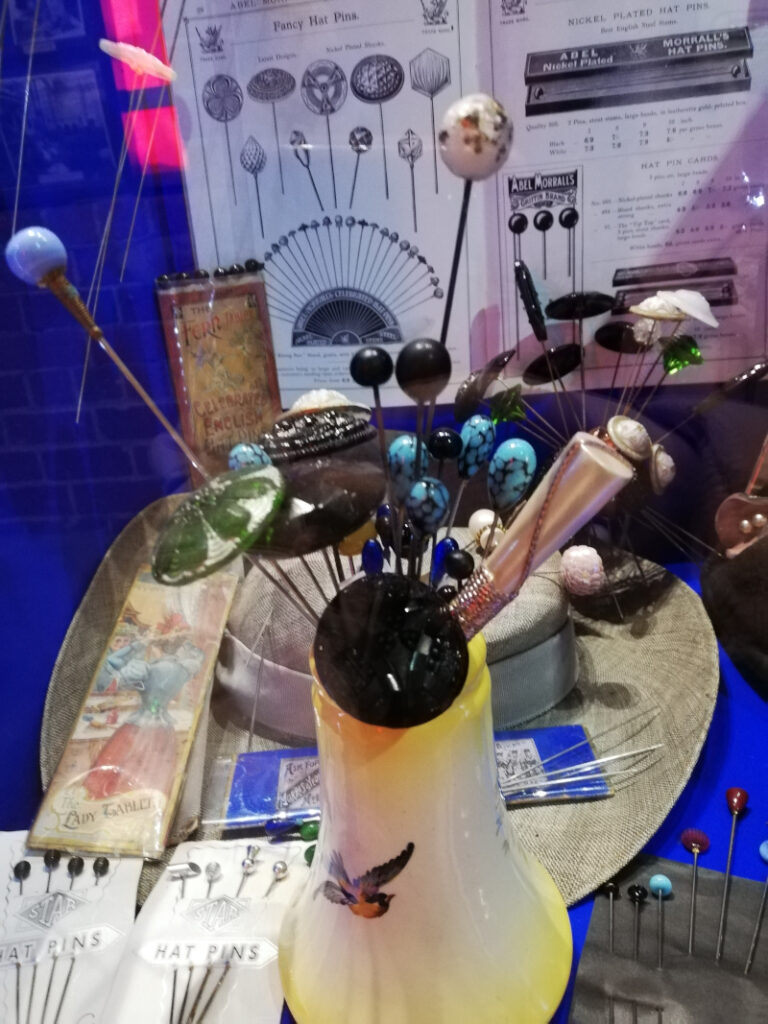
The displays on the upper floor included needles right from the very start – a dried yucca thorn with fibre attached, referred to as “Eve’s Needle” – to the very modern, needles used in the space programme, or the preposterously fine needles used for corneal surgery. There were displays about uses of needles, in embroidery, book binding, sailmaking,surgery. The dressmaking display even included an absolute dead ringer for my dearly-loved hand cranked Jones sewing machine. There were displays about fish-hooks and fly tyeing (after all, a fish hook is basically a needle with a barb on the end. There was even a video about the operation of the scouring mill, each process demonstrated by an elderly man who’d been apprenticed there as a youth.
There’s also a cafe, and a visitor centre for the adjoining Abbey ruins on the site, and what looks like an interesting two or three hour ramble along the watercourse that I didn’t have time for.
I had a delightful day. Highly recommended!
Textile Tours of Paris
A little while ago, we were in Paris – a trip planned last year, and carried on with, sanitiser in hand, in spite of the certainty of quarantine when we got home.
Amid a variety of adventures (we were staying with family) we went on a Textile Tour of Paris with Rebecca Devaney.
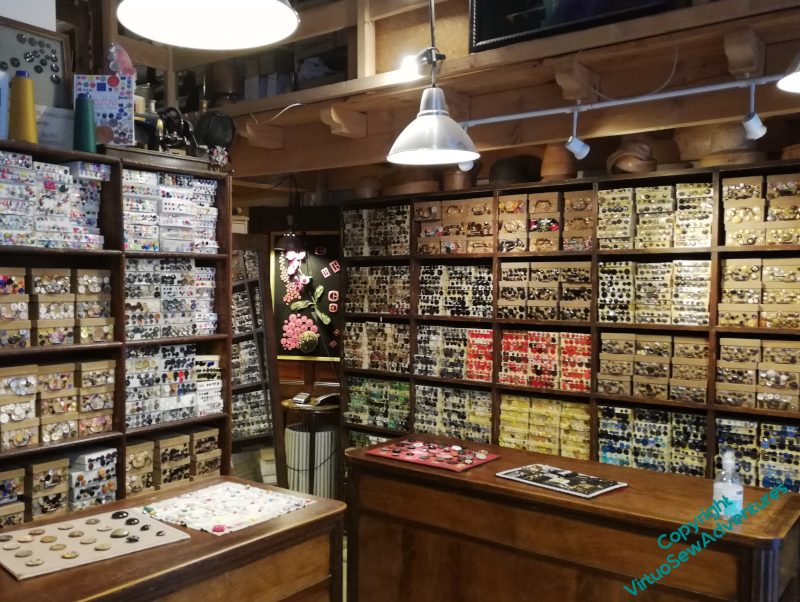
Ultramod – buttons 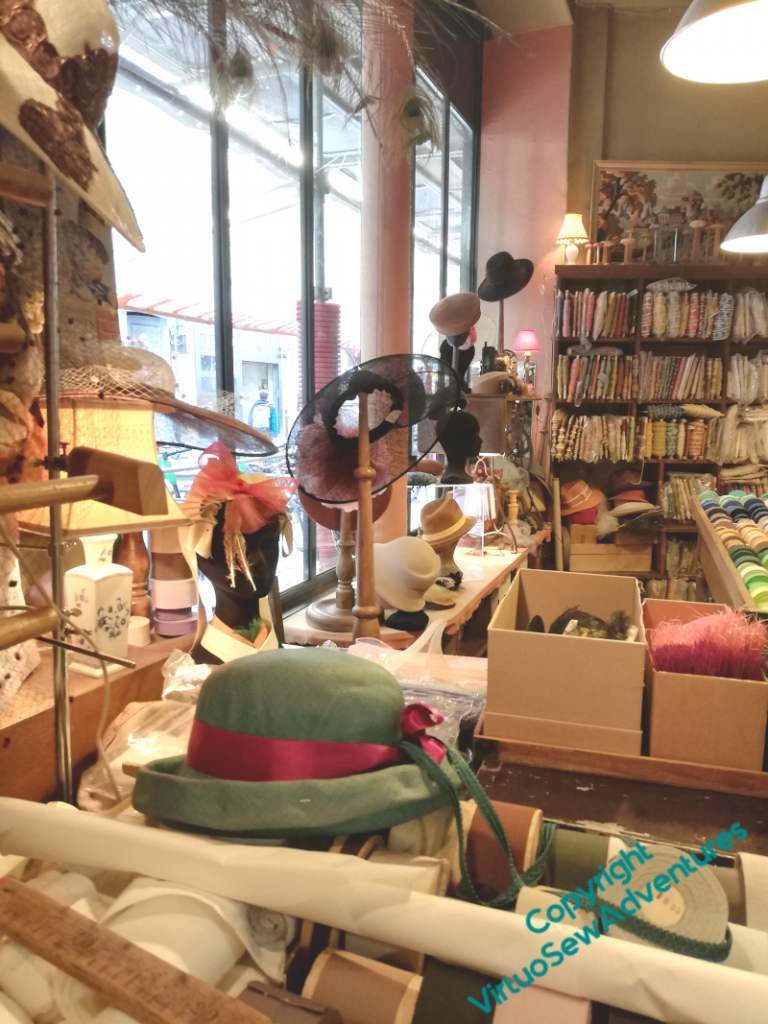
Ultramod – Hats 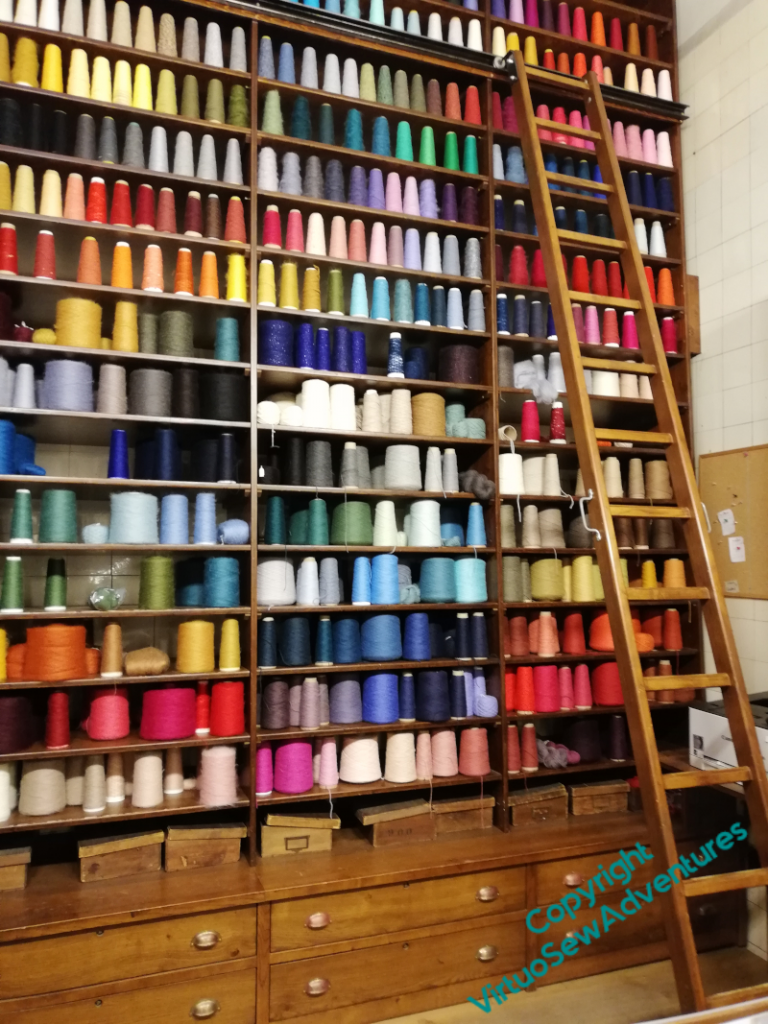
La Droguerie – Colour wall
We met at Metro Quatre Septembre, and Rebecca guided us to the various shops, telling us about the history of the atelier system and the particular histories of the various shops as we went. Even my non-embroidering engineer uncle found things to interest him – there was a poster for a manufacturer of sewing machines which pivoted (to use the modern term) to aero engines during the first world war! – but in fact, all of us found something to respond to our particular interests.
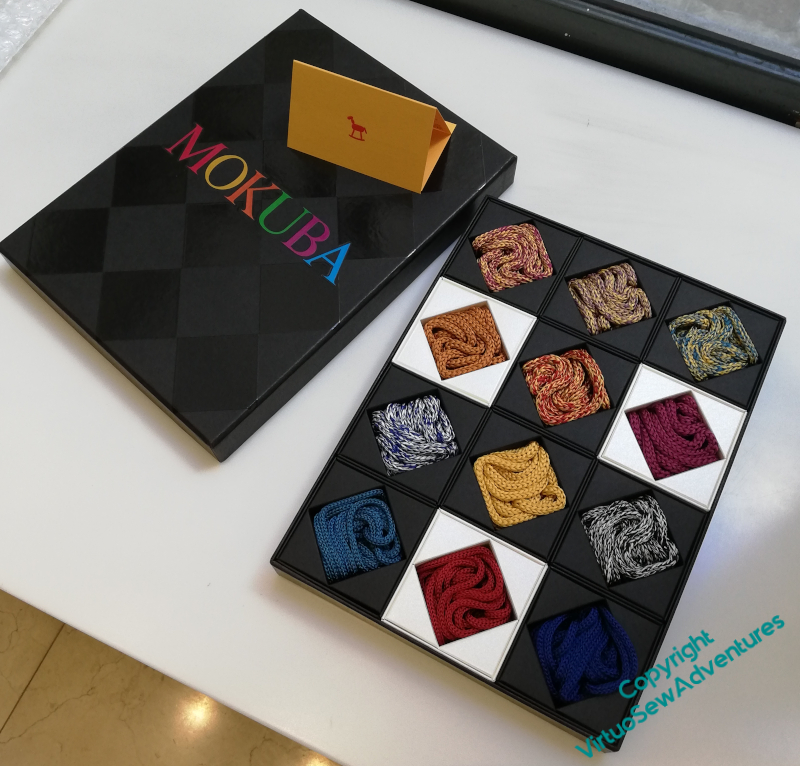
Mokuba Collection 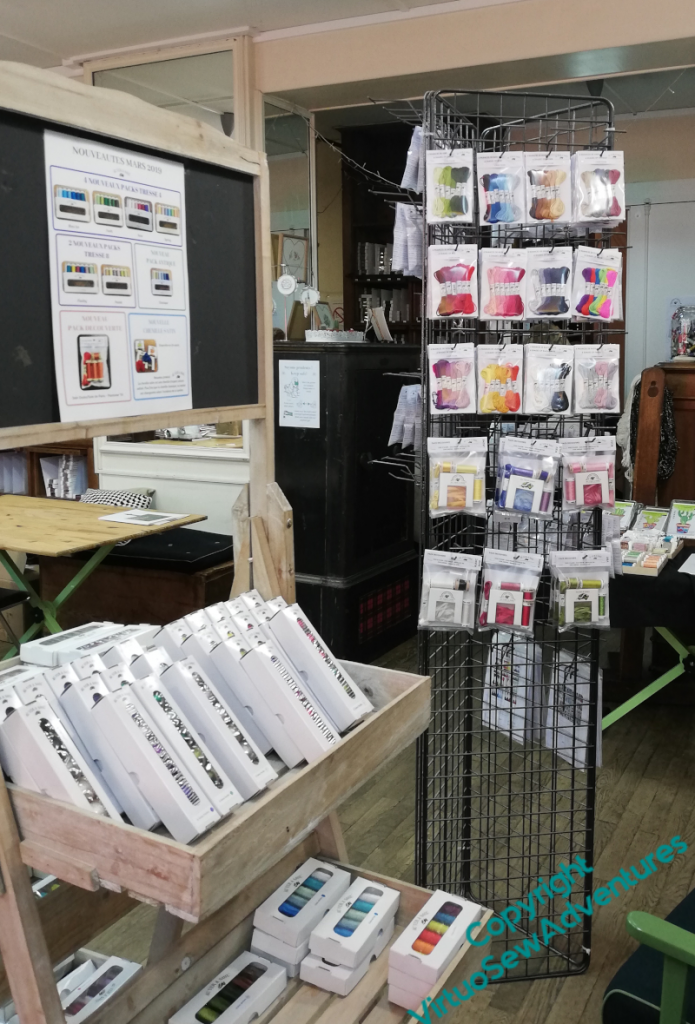
Au Ver A Soie 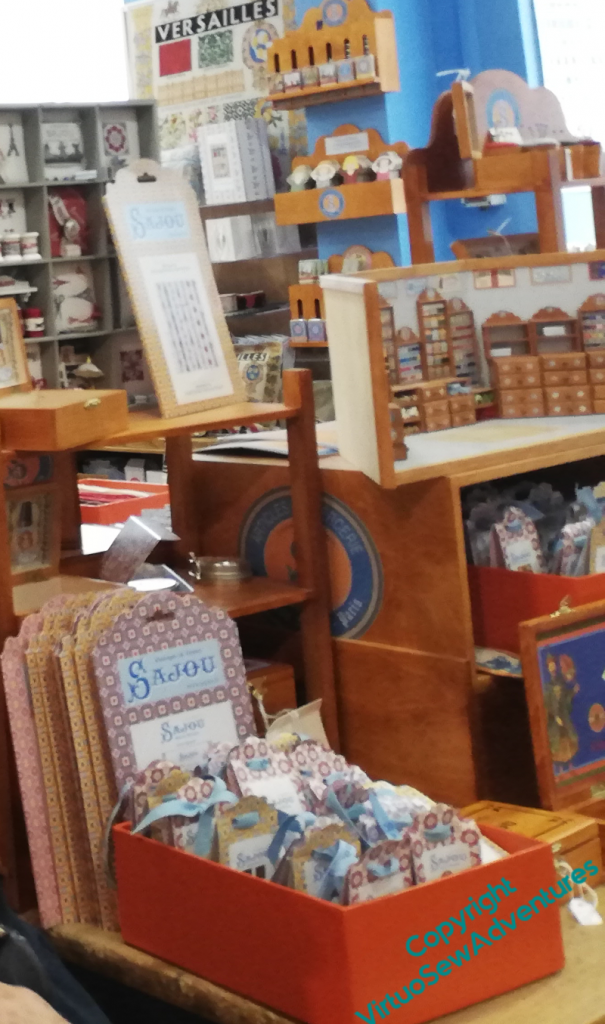
Boutique Sajou
The shops are all very different, and now I’ve visited them I will be better prepared for another visit, perhaps with plans in mind. What they share is knowledgeable and enthusiastic staff – in fact one of those in Au Ver A Soie is doing an RSN course. Online, in these days, naturally, but it was a great delight to see someone else’s work, if only on their phone.
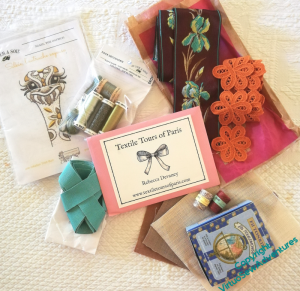
If you get a chance, when travelling is easier, do take a tour with Rebecca. She’s delightful, knowledgeable, and enthusiastic, and the extra bits and pieces of information you have, not to mention some sense of all the interesting materials you can find, are all well worth the effort.
As you can see, I was fairly restrained in my purchases, because I had not travelled with extra suitcase space, or planned in advance. The grosgrain ribbon matches the stone in my engagement ring, the brown ribbon with irises is for a hat, and so is the orange flower lace, the silk thread from Au Ver A Soie and the fil dentelle from Sajou are just to play with, and the little ostrich kit is my entertainment for the period between Christmas and New Year!
And in other news, Episode 27 of SlowTVStitchery is now live, and discusses reaching an important turning point, and the delights of solving embroidering puzzles.
Worth A Visit – The Jersey Occupation Tapestry
Regular readers will know that I like large projects for myself; it won’t have been so obvious that I am interested in community or group projects as well. Not just the stitching, but the inspiration, organisation, management and quality control necessary to bring such projects to a successful conclusion.
And make no mistake – quality control can be a serious issue. Often you will hear it suggested that volunteers can’t be expected to do good work, or that, because they are volunteers, anything they produce, however sloppy, should be accepted with enthusiasm and gratitude.
Well, I’m sorry, but I don’t agree. Volunteers should be expected to want to do well, and to practise to make sure that they do.
The volunteers who stitched the Jersey Occupation Tapestry were asked to stitch sample pieces before starting on the real thing. The twelve panels of the Tapestry are worked entirely in Basketweave Tent stitch, which is an easy stitch – but that very simplicity means that there are no textural variations available to hide variations in technique. So all the stitching had to be right. And it was.
The panels were designed by a curator at Jersey Heritage, who then drew out the designs on canvas and marked the thread colours for each element. In the case of seas, skies and such sections, he suggested a range of colours and allowed the stitchers to use their own artistic skills to bring those elements to life. If you look at the photos, I think you’ll agree that his faith in them has been triumphantly justified.
The Jersey Occupation Tapestry Gallery is part of the Maritime Museum in St Helier, and was worked to commemorate the Liberation of the Channel Islands in 1945. Unlike some textile galleries, they don’t mind photographs being taken, although as the panels are displayed behind glass, flashes would be counterproductive as well as unpopular! The display includes some details about Albert Bedane, and a video about the making of the tapestry. Some of the stitchers were children on the island during the Occupation, and some of their memories are included in the designs.
Altogether I had a fascinating time, and can recommend it highly!
I am not alone. . .

Sir William Matthew Flinders Petrie (picture from Wikipedia)
I recently had a trip to London, when I managed to fit in a brief visit to The Petrie Museum of Egyptian Archaeology as part of my background research for the Dreams of Amarna panels. Sir William Matthew Flinders Petrie excavated at Amarna during the 1890s, finding and recording a fine painted pavement, since destroyed, of which Mary Chubb, who wrote the book which inspired the Dreams of Amarna project, would certainly have known. He also trained Howard Carter, whose discovery of Tutankhamun’s tomb sparked the Egyptological fever that took hold in Europe and indirectly provided the impetus for Mary’s career.
I arrived late in the day, and really didn’t have much time to look around, but I did tell the lady at the desk why I was interested, and was rather startled when she said “Oh, then there is something you must see!” and took me to see it. It turned out to be a modern tapestry, woven at the Ramses Wissa Wassef Art Centre in Saqqara (itself a place to set Egyptologists a-tingle) and named “Dahsur Lake” . The tapestry is very reminiscent of the Amarna style, full of life and colour, vigorous and joyful. The weavers produce their panels without sketches behind their looms, and I am astonished at what they have produced.
Clearly I am not alone in finding the art and story of Amarna inspiring. I wonder, will I produce something as good?

